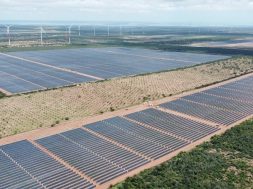
Solar energy: Now is the time for India to catch the sun
The recent tenders for setting up and operating solar and wind power generation farms show that the price of renewable power is now approaching that from greenfield coal-based power plants in India. It will not take too long for solar photovoltaics to become the cheapest source of power.
But solar power is generated only during the day, that too intermittently. Similarly, wind power is generated during certain months and the power output also varies. If energy storage was inexpensive, one could have dealt with this intermittency by storing excess energy generated to be used when needed. Since grid-connected energy storage continues to be very expensive, generated power needs to be consumed instantly.
As the consumer demand for power also varies with time-of-day and season, there is a problem of matching demand to supply, both of which vary independently. One option would be to have excess capacity and get the non-renewable power generators, which are under our control, to back off when needed. However, this strategy has to be adopted judiciously, as it will increase the cost of non-renewable power.
Demand management, where the customer is incentivised to use more power when available and consume less when there is a shortage, will help and will, indeed, become necessary. Smart buildings and factories will take us towards implementation of demand management in time.
But what would really enable renewable power to become an unfettered dominant supplier is some kind of largescale storage. The electric vehicle (EV) is precisely such an application, where the cost of energy per km, including the cost of its storage, has to be only lower than the corresponding cost of a petroleum-based vehicle, to be economically viable.
EVs use distributed storage. Growth of renewable energy in India, thus, has an EV compulsion, as it requires EVs to grow in the country and provide the first large-scale storage that the growth in renewables needs. In energy terms, if all vehicles in India were electric today, they would use up 15-20% of India’s electricity generated.
If their batteries are charged intelligently, EVs could help overcome the intermittent nature of renewable-power generation. But are EVs in themselves economically viable in India today? The EV needs batteries to store energy needed for its operation. As battery prices fall steadily and the efficiency of motors grows to deliver higher mileage per unit of energy, there is a crossover point when EVs with sufficient range per battery charge become a more cost-effective option than diesel, petrol or CNG based-vehicles. Left to itself, it may take three to five years for prices to fall enough in international markets for EVs configured for use abroad to emerge as a better alternative for consumers in India.
This, however, implies that India would be importing EV subsystems from the start, and it will be difficult to establish any kind of technology leadership. We may later see local manufacturing of at least some of the subsystems. Nevertheless, there is the real possibility that the value of imports of EVs and EV subsystems will match the oil import bill today and leave us no better off than today.
But there is another option towards large-scale EV adoption. The key elements of EV technology are available today at the right prices for several types of vehicles widely used in the Indian market. With an innovative, coordinated and market-oriented effort by industry and the government, certain EVs can be produced in India today. Adoption can be rolled out rapidly in a fully market-driven manner.
In these specific segments, India could attain a globally competitive leadership position in three to five years. This effort will simultaneously encourage local intellectual property (IP) generation and the manufacture of most EV subsystems or substantial parts of them. India can move towards substitution of oil imports with locally produced energy and EVs including subsystems.
Apart from these intrinsic benefits of early adoption of EVs, it forces the simultaneous growth of renewable energy production in India. This slew of reasons should drive us to single-mindedly pursue immediate efforts in a mission mode to enable early adoption of EVs in India.
Alaissez-faire attitude will negatively impact the indigenous manufacturing of India’s future automobiles and subsystems as well as India’s import bill. It will also slow down the integration of renewable energy sources into the grid at scale.
















